In Alaska, 28 million acres encompassing some of the state’s wildest and most remote swaths of public lands are at risk of losing protections which have kept them safe from extractive development for over half a century.
Of those 28 million acres, 1.27 million are found in Alaska’ Bristol Bay region, an area more than six times the size of the region protected by the EPAs 404(c) veto blocking the much-maligned Pebble Mine. The potential removal of protections on these lands places much of it at risk of being opened to fossil fuel, mining, and other development, and it’s an issue all anglers who fish the waters of the Last Frontier should weigh in on.
In 1971, the Alaska Native Claims Settlement Act withdrew some 50 million acres of public lands from extractive development. The acreage spans the state, from Bristol Bay to the high Arctic to northern Southeast Alaska and many points in between. It was, and remains, one of the largest land conservation designations in U.S. history, and was done “for the protection of the public interest.”
These lands, known as “D-1 lands” — the subsection of ANCSA that withdraws the land from development is Sec. 17(d)(1). The lands are known to Alaskan anglers and hunters as some of the wildest and most accessible public lands in the state. That they are ineligible under ANCSA to be proposed for mining development gives sportsmen and women the assurance that they’ll always be managed — at least partially — with hunting and fishing in mind.

In 2021, however, a series of Public Land Orders from BLM in Alaska would have revoked D-1 status for 28 million acres of public lands in the Kobuk-Seward Peninsula, the Ring of Fire, Bay, Bering Sea-Western Interior, and Eastern Alaska planning areas. These planning areas are home to all five species of Pacific salmon, rainbow trout, Dolly Varden, Arctic grayling, Arctic char, inconnu and northern pike — all viable public lands game fish in the state. They’re also home to some of Alaska’s prized caribou herds, muskox, Dall sheep, moose, black bears, brown bears and wolves. The orders were never published in the public record, and therefore, they were never put into motion thanks to what the BLM now describes as “legal defects.”
The BLM “is now addressing the legal defects in the decision-making process, including ensuring compliance with the requirements of the National Environmental Policy Act by preparing an environmental impact statement” in regard to the revocation of the D-1 status on the respective lands across the state. A notice of intent to prepare an environmental impact statement on the impacts of opening D-1 lands to development was filed by the BLM in August 2022.
The D-1 revocation would impact 1.27 million acres in the Bristol Bay watershed, alone. This area just got a reprieve thanks to the Supreme Court’s decision last month not to hear an appeal from the backers of the proposed Pebble Mine. The mine was vetoed by the U.S. Environmental Protection Agency last year. As most dedicated trout anglers know, this region is home to the best wild rainbow trout fishery in North America.

Should D-1 protections be revoked from Bristol Bay and other chunks of public lands, there's little chance of ever having them restored. In all, the 28 million acres of protected land in question is about 12.5 times the size of Yellowstone National Park.
Because word of the issue has been largely confined to Alaska, the potential for the revocation of the protective status of 28 million acres of public lands has escaped notice of many outside the state. And now, time is of the essence for public involvement — the deadline for public comment is tomorrow, Feb. 14, and numerous conservation groups are asking Americans to do their part to preserve these protections by making their voices heard.
If it seems that Alaska’s public lands are perpetually under attack from extractive industry, it’s not just perception. It’s reality.
Now that the drama surrounding the proposed Pebble Mine development appears settled thanks to the U.S. Supreme Court, many in the conservation community have turned their attention toward the contentious Ambler Road proposal, which would construct an industrial-grade highway across more than 200 miles of the Alaskan Interior to service giant prospective mines in the Ambler Mining District.
The road would require thousands of stream crossings and bisect the fourth of Gates of the Arctic National Park and Preserve. It would connect with the Dalton Highway that follows the Alaskan Pipeline north to Deadhorse, and facilitate the delivery of raw ore from the yet-to-be-constructed mining district to market.
What’s more, ongoing mineral and energy extraction continues to threaten the Arctic National Wildlife Reserve, the Western Arctic Reserve and the Brooks Range. Throw in the threats associated with heavy-metal mining in the transboundary region of Southeast Alaska, and the state’s prime fish and wildlife habitat is under threat from virtually every industrial front.
That Alaska is home to America’s last healthy salmon runs (and even then, some once-prolific runs are on the ropes), and its largest, most-intact roadless fish and wildlife habitat matters, too. Fishing and hunting are a way of life in Alaska, both for visiting anglers, hunters and wildlife watchers who pour more than $1 billion into the state every year, and for Indigenous communities that are now dealing with the disastrous effects of climate change and development.
For many Alaskans, and for many Lower 48 hunters and anglers who may not know much about the state’s D-1 lands, the in-perpetuity protection of these public lands is incredibly important.
For indigenous communities, the loss of D-1 protections could be devastating.





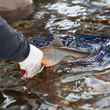





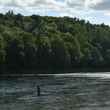









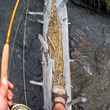



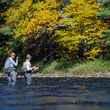


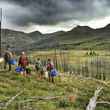
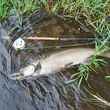
Comments
Capt AJ replied on Permalink
AK threatened? Biden is current President... or is this "Pre Presidential hypothesis" IF candidate Trump were to be elected?
edward michaels replied on Permalink
I am old now, and I am done fighting, for the environment, and for rest of my long-held beliefs. I have finally decided to accept what the younger people behind me choose to do to protect their lives, their world, and their values, and become a spectator for the little time I have left.
I will add my perceptions and opinion though. All is hopeless for everyone except the extremely wealthy, who (usually) don’t care about anything or anybody, because they think they can spend their way out of any problems that personally befall them. I will make this short and to the point. Unless money is taken out of politics, there is no hope for the future, which is rumbling toward the precipice. All of our elected officials win their positions because they choose to do the bidding of the monied interests that bankroll them. They will NEVER do the bidding of those that do not bankroll them. The only chance that this society has to do what is right by Mother Earth, and for ALL of it’s inhabitants, is to reverse the outrageous and purposefully misnamed Citizens United SCOTUS decision, which gives corporations supersized rights as citizens, dwarfing real citizen’s rights, and then follow-up by making all elections in this country (local, state, and federal) publicly financed. Without that, further progress is impossible, regardless which party in our Uni-party system is in office.
Good luck to you all!
edward michaels replied on Permalink
Why when I make comments that don’t incite anyone’s sensibilities, do you block them from appearing?
Chad Shmukler replied on Permalink
Pages